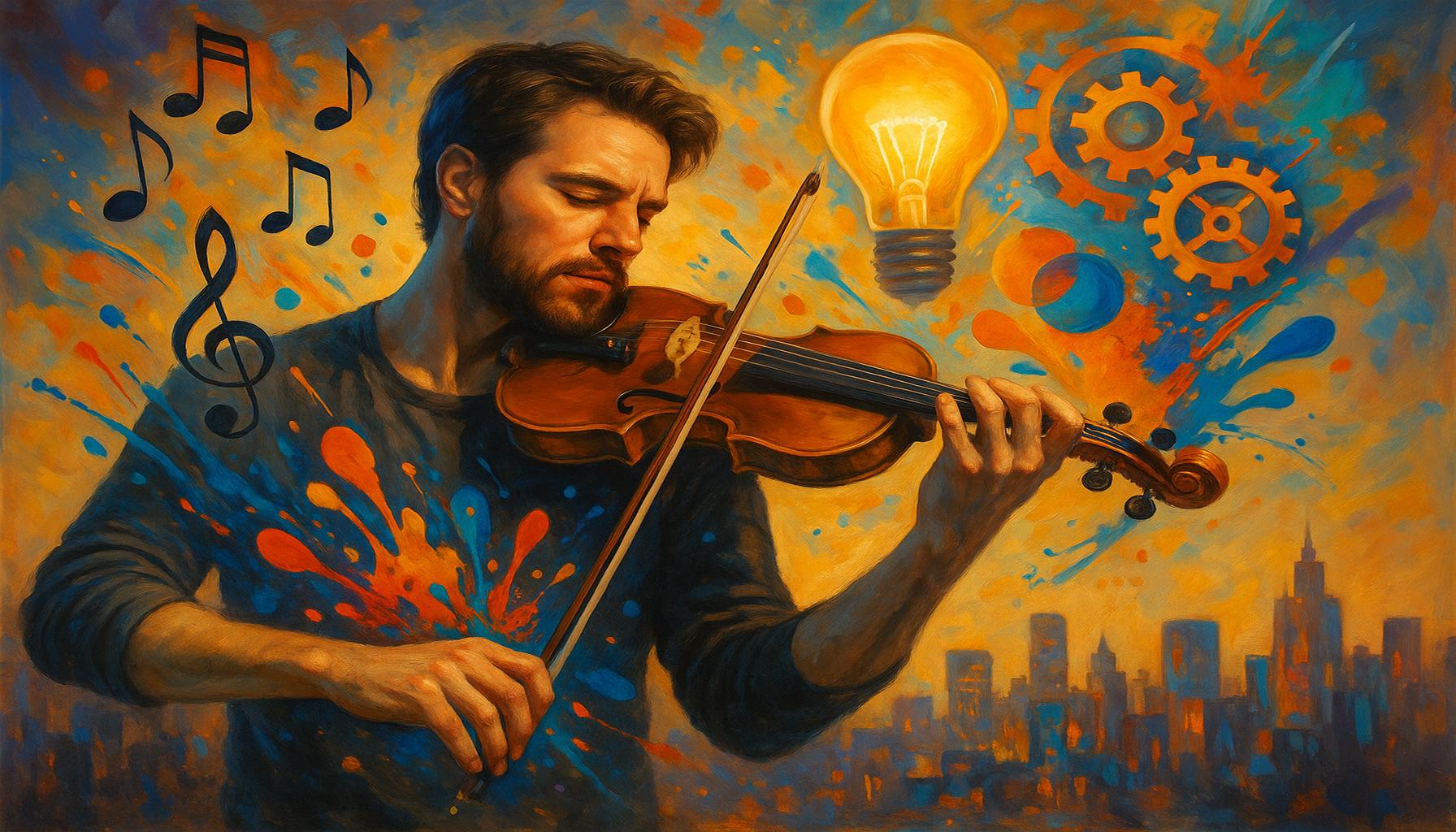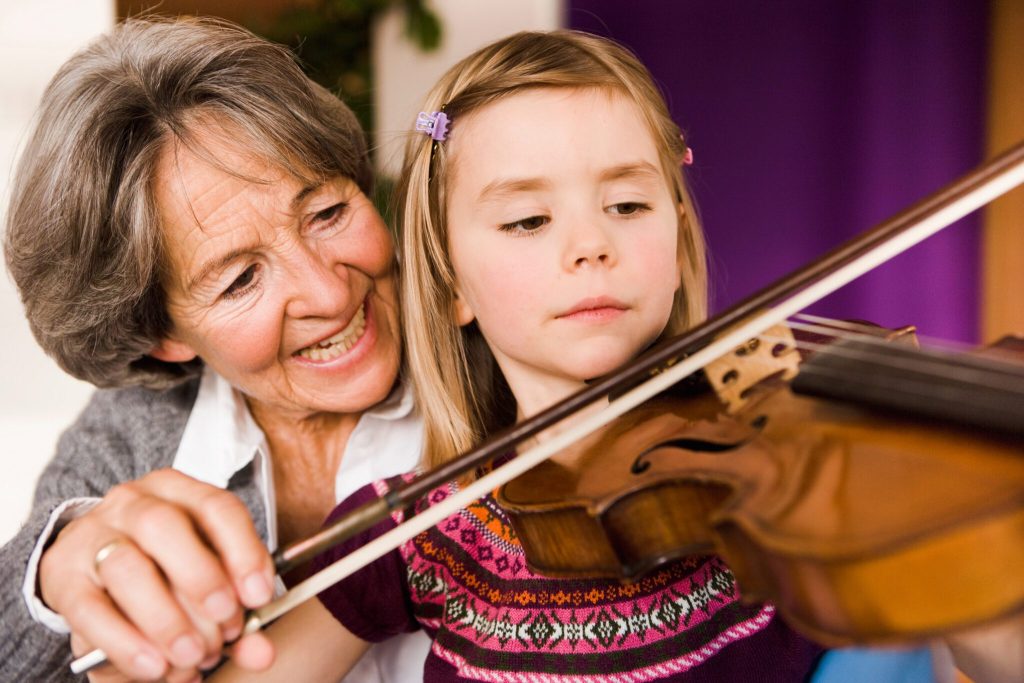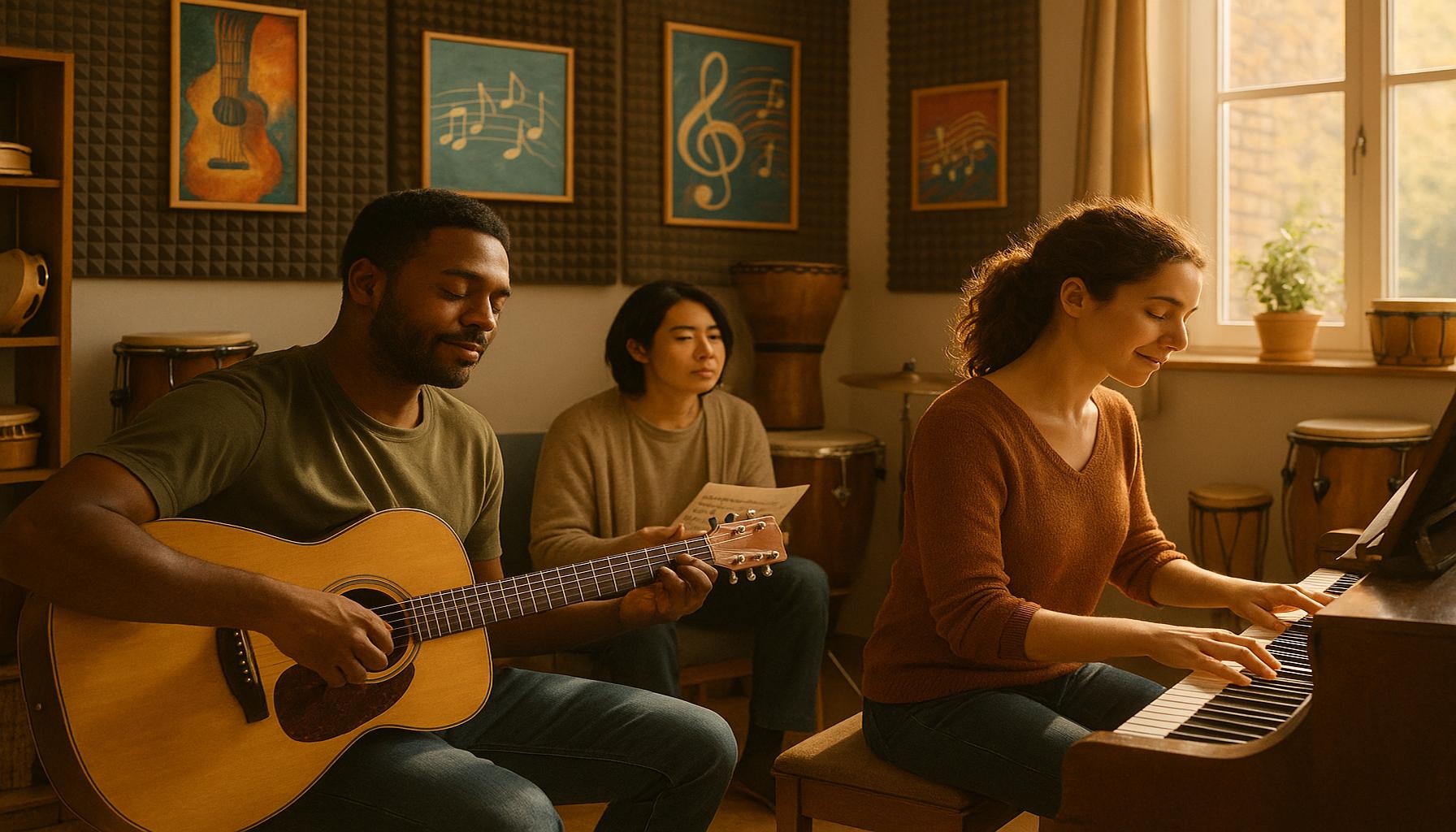The Influence of Music on Creativity: How Playing an Instrument Can Stimulate Innovation

The Profound Impact of Music on Creative Thinking
Throughout history, music has been a vital part of human experience, entwined with our emotions and mental faculties. For many individuals, playing an instrument serves not merely as a creative outlet but as a powerful means of communicating complex ideas and feelings. This unique attachment highlights the powerful connection between music and creativity, often leading to groundbreaking innovations and fresh perspectives.
Numerous studies have illustrated the cognitive benefits associated with musical engagement. Engaging with music, whether through playing an instrument or listening actively, can significantly enhance various cognitive functions and stimulate innovative thought processes. Here are several impactful ways in which playing an instrument nurtures creativity:
- Improved problem-solving skills: Musicians frequently navigate intricate patterns and structures, sharpening their analytical abilities. For instance, a guitarist grappling with chord progressions learns to identify and overcome challenges creatively, a skill transferable to areas like mathematics or programming.
- Enhanced memory: Mastering an instrument involves memorizing notes, scales, and compositions, which bolsters both verbal and visual memory. This improved retention aids musicians in other domains, such as language acquisition or data retention in professional settings.
- Emotional expression: Music provides a powerful medium for conveying emotions. Through songwriting or improvisation, musicians explore and articulate their feelings, which can inspire innovative ideas in other art forms or everyday problem-solving.
Curious about how these benefits manifest in real life? Many renowned artists, inventors, and business leaders credit their musical experiences as pivotal to their creative success. For example, Steve Jobs, the co-founder of Apple, often spoke about the influence of music on his innovation process, believing that the arts fostered an openness to new ideas which was crucial in developing groundbreaking technology.
Moreover, engaging with music can lead individuals to discover new genres, styles, and cultural practices, further enriching their creative palette. By immersing oneself in music, whether through personal practice or communal gatherings, individuals have the chance to tap into a vast well of inspiration, nurturing creativity that transcends traditional boundaries.
As you explore the multifaceted relationship between music and creativity, consider how these insights can enhance your own thinking. The world of creativity, illuminated by the interplay of notes and rhythms, is a rich terrain inviting you to explore its depths and uncover new ideas and perspectives.

DISCOVER MORE: Click here to learn about crafting sustainably
Unlocking New Dimensions of Thought Through Music
Music, with its intricate layers of melody and harmony, is often considered a universal language that transcends borders and cultures. However, its influence extends far beyond mere enjoyment or emotional release; playing an instrument can actively enhance an individual’s creative capabilities. This transformative effect can be understood by exploring how musical engagement reshapes our cognitive landscapes, paving the way for innovative thought and expression.
A crucial benefit of playing an instrument is its ability to strengthen cognitive flexibility, a key component of creative thinking. Cognitive flexibility refers to the brain’s capacity to adapt to new and unexpected situations. Musicians regularly shift between various musical styles, practice techniques, and improvisational methods, honing their ability to view problems from multiple angles. This skill not only enriches their musical repertoire but also equips them with a toolkit for tackling diverse challenges in fields such as engineering, design, and social entrepreneurship.
Additionally, engaging with music fosters an environment conducive to collaborative creativity. Group music-making, whether in a band or ensemble, often necessitates open communication, shared decision-making, and collective spontaneity. This collaborative approach enhances creative synergy, whereby ideas flourish through the interaction of differing perspectives. For example, in American jazz culture, the act of improvisation in a group context allows musicians to bounce innovative ideas off one another, often resulting in fresh and dynamic compositions that push traditional boundaries.
Moreover, playing an instrument has been shown to positively impact neuroplasticity, the brain’s ability to reorganize itself by forming new neural connections. Research has demonstrated that musical training can lead to structural changes in the brain, particularly in areas associated with memory, attention, and problem-solving. For individuals, this means that the more they engage in musical practice, the more adept they become at embracing new ideas and overcoming creative blocks, which is essential in today’s fast-paced, ever-evolving world.
Here are several key ways in which playing an instrument can drastically enhance creativity:
- Enhanced emotional intelligence: Music serves as a gateway to understanding emotions, allowing musicians to express feelings that may be difficult to articulate. This emotional intelligence fosters empathy, which is critical in collaborative efforts and creative brainstorming.
- Increased focus and discipline: Regular practice requires dedication and concentration, skills that transfer to other creative pursuits, enabling deeper engagement and more profound exploration of ideas.
- Broadened cultural awareness: Exposure to diverse musical traditions can inspire innovative ways of thinking. By integrating various genres and styles, musicians can spark new ideas that draw from a rich tapestry of cultural influences.
As we delve deeper into the intricate link between music and creativity, it becomes clear that the benefits of playing an instrument extend far beyond the realm of sound. They touch on the very core of human innovation, driving us to explore uncharted territories in thought and expression.
| Advantage | Description |
|---|---|
| Cognitive Development | Playing an instrument engages various cognitive functions, enhancing memory and problem-solving skills. |
| Emotional Expression | Music provides a medium for self-expression, fostering creativity and innovative thinking. |
| Collaboration Skills | Playing within a group cultivates teamwork and communication, vital for creative innovation. |
| Stress Reduction | Engaging in music can significantly reduce stress, leading to a more relaxed mindset conducive to creativity. |
Exploring the advantages of playing an instrument not only illuminates artistic development but also reveals a fascinating interplay between music and creativity. The act of making music stimulates the brain in unique ways, leading to profound implications for innovation across various fields. For instance, involvement in music has been linked to improved cognitive functions such as memory retention and complex reasoning. These foundational skills form the bedrock of advanced thinking and inventive problem-solving. Moreover, through musical practice, individuals discover a powerful outlet for emotional expression, which not only enhances personal creativity but also enriches one’s ability to think divergently. As musicians collaborate, they develop essential communication and teamwork skills, further fueling their capacity for creative innovation. Ultimately, understanding how music impacts creativity can encourage a deeper exploration of the arts as a vital component of holistic education and personal development.
DIVE DEEPER: Click here to uncover the art of photography
Creative Problem-Solving and the Musical Mind
In the realm of creative endeavors, the ability to navigate complex challenges and devise innovative solutions is paramount. Playing an instrument cultivates a unique mindset that enhances creative problem-solving abilities. Musicians frequently engage in a cycle of experimentation and iteration, where they confront obstacles in their musical journey—be it mastering a challenging piece, composing original melodies, or improvising during performances. Each of these challenges requires a blend of critical thinking and creativity, ultimately fostering a mindset that seeks solutions rather than being stymied by difficulties.
Another area wherein musicians excel is divergent thinking, a cognitive process that allows individuals to generate multiple solutions for a given problem. Research has shown that musicians often outperform non-musicians on tests measuring divergent thinking, which makes sense when considering how integral improvisation is to many musical forms. For instance, in genres such as blues or rock, artists frequently draw upon personal flair and spontaneity to create compelling solos. This practice translates into effective brainstorming methods in artistic and professional settings, allowing for a multitude of solutions to emerge when faced with the need for innovation.
The act of creating music can also nurture one’s intrinsic motivation, which is essential for delving into the expansive realms of creativity. Musicians often engage in their craft for the pure joy of expression rather than financial gain or external validation. This deep-seated motivation provides the freedom to explore ideas without the constraints of conventional expectations, encouraging the development of original concepts and artistic identities. In contrast, individuals driven solely by extrinsic rewards may inhibit their creative potential by focusing too heavily on outcomes rather than the creative process itself.
Furthermore, musicians possess heightened sensory awareness, allowing them to perceive nuances in sound, rhythm, and texture. This acute awareness translates into other creative pursuits, enabling individuals to notice subtleties that others may overlook. For instance, a visual artist with a background in music may find inspiration in the interplay of colors and sounds, breeding innovative approaches to their artwork. Similarly, writers may develop a more nuanced understanding of language through their experience with musical structure and lyrical composition. This crossover of skills highlights the interconnectedness of creativity across various disciplines.
In light of these cognitive and emotional benefits, teachers and educational institutions in the United States have begun to recognize the importance of incorporating music into curricula—not solely for its intrinsic value but for its role in cultivating innovation. Programs that integrate music education have shown promising results, helping students to develop a range of skills from teamwork to advanced problem-solving. Schools that adopt a holistic approach, combining music with STEM fields (Science, Technology, Engineering, and Mathematics), are paving the way for a new wave of innovators who can bridge gaps between artistic expression and technical expertise.
The exploration of these dynamics signifies a burgeoning field of study aimed at unpacking the myriad ways in which music influences creativity. Bringing musical elements into home, school, and workplace settings can ignite the creative spirit and inspire groundbreaking ideas. As we continue to unravel the profound connections between music and innovative thought, it becomes clear that the potential to reshape our understanding of creativity lies within the notes we choose to play.
DIVE DEEPER: Click here to uncover the therapeutic benefits of writing
Final Thoughts: The Musical Path to Innovation
As we have explored, the relationship between music and creativity is as intricate as it is enriching. Playing an instrument offers a multifaceted approach to cultivating innovative thinking and problem-solving skills that extend beyond the realm of music itself. The benefits, from enhanced divergent thinking to heightened sensory awareness, underline the profound impact that musical engagement can have on our cognitive processes.
Moreover, the integration of music into educational frameworks in the United States is not just a trend but a necessary shift toward fostering a generation of well-rounded innovators. By recognizing music as a vital component of creative education, we equip students with essential skills that prepare them to tackle complex challenges across diverse fields. The synergy of arts and STEM is paving the way for individuals who are not only equipped to innovate but also to combine technical prowess with artistic sensibility.
Finally, let us continue to embrace the transformative power of music, whether at home, in schools, or in workplaces. By incorporating musical practices into everyday life, we can stimulate creativity in ways that inspire groundbreaking ideas and novel solutions. The journey of innovation, fueled by the rhythms and melodies we create, reminds us that within the universe of music lies an endless potential to shape our thoughts, ideas, and ultimately, our future.


